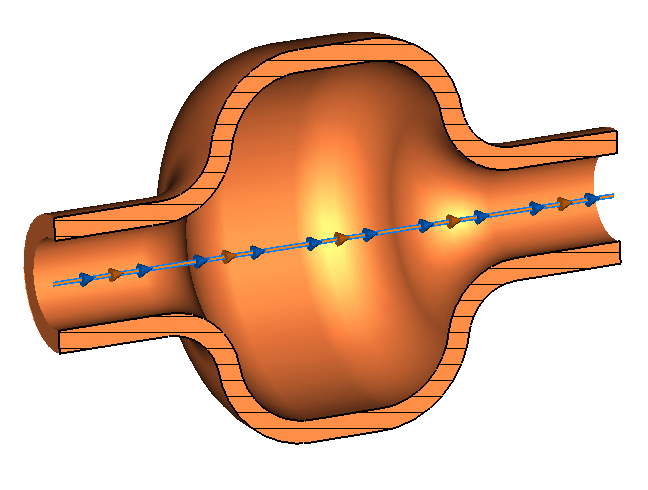


This example demonstrates the wakefield analysis of a simple accelerator cavity with high surface losses.
The cavity and the beamtubes are created by adding two cylinders. Afterwards the edges of the resulting body are rounded. The lossy hull is build with the transform tool and the shell tool. The particle beam is defined by picking the center of the beamtubes profile and activating the particle beam tool. The charge distribution of the beam is always a Gaussian shaped bunch. In this case, the deviation is chosen to be 10 cm and the total charge is set to -1e-12 C. For this simulation the particles are moving at the speed of light.
The wakefield solver dialog box provides access to the simulation settings. The simulated wakelength is set to 12000. Since the surface conductivity of the cavity hull is relatively low (1000 S/m), it is necessary to decrease the time step stability factor from 1.0 to 0.5, in order to avoid instabilities of the simulation algorithm. For higher conductivities (e.g. copper: 5.6e7 S/m), it is not necessary to reduce this factor.
The results of the wakefield simulation can be found in "1D Results\Particle Beams\ParticleBeam1". The entries of main interest are usually the "Wake potential" and the "Wake impedance", while the "Wake Loss Factor" is shown in "Tables\0D Results". Moreover, under "2D/3D Results", the electric field can be visualized on a 2D plane as a function of time. The electric field data were recorded using the E-field monitor, which was created and adjusted prior to the simulation.